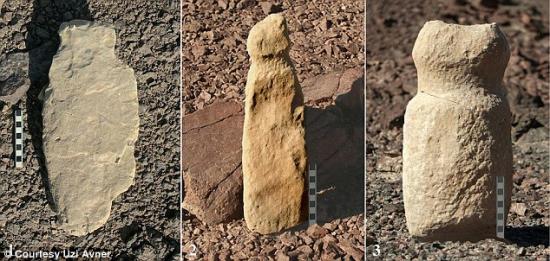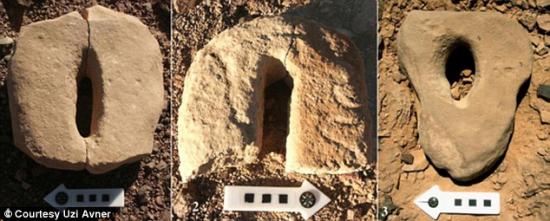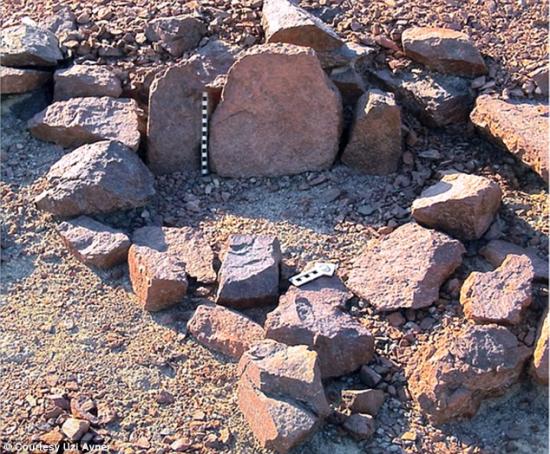Mark Prigg
Source - http://www.dailymail.co.uk/sciencetech/article-2948229/100-sex-cult-sites-Israel-Mysterious-8-000-year-old-stone-circles-filled-phallic-carvings-mountains.html
Sites in the Eilat mountains contain phallic stone structures
Around 100 prehistoric 'cult sites,' containing phallic carvings have been found in the Eilat Mountains in the Negev Desert in Israel.
The sites date back around 8,000 years, and archaeologists were stunned to find a variety of stone structures and artifacts.
They include stone circles that measure 1.5 to 2.5 meters across with penis-shaped installations pointing toward them.

Researchers found a variety of stone structures and artifacts, including stone circles that measure 1.5 to 2.5 meters across with penis-shaped installations pointing toward them

In addition to the penis-shaped structures, researchers also found that some of the stones have vulva-shaped holes cut into them, which the team describe as 'pear shaped'.
'While a comprehensive stylistic study of the stone objects is still ongoing, a preliminary interpretation suggests two symbolic aspects,' the team, led by Uzi Avner, a researcher with the Arava-Dead Sea Science Center and the Arava Institute, wrote.
'One is fertility, represented by the stones with elongated perforation (vulva-shape) and by the very combination of the elongated cell and the circle.'
Death is 'signified by the burial of stone objects and by setting them upside down,' the team members wrote in their paper.
In one, a humanlike stone carving was found buried with 'only the very top visible on the surface.'
Other findings there include standing stones that reach up to 2.6 feet (80 centimeters) high, stone bowls and stone carvings that have a humanlike shape.
These sites are often clustered together, and in one area the team discovered 44 cult sites in a spot encompassing only 0.8 square kilometers (less than 200 acres).
'Taking in[to] consideration the topography, environmental conditions and the small number of known Neolithic habitations in the general southern Negev, the density of cult sites in this region is phenomenal,' the team, led by wrote in an article published recently in the Journal of the Israel Prehistoric Society.
Archaeologists are working to decipher any meaning from the artifacts and structures, and say that both death and fertility seem to be symbolized at the sites.

A pair of installations, where the elongated cell points to the stone circle.
They also say similar sites are found throughout the area.
'Although the majority of these sites is currently recorded in the Eilat mountains, they were also found in other regions of the Negev and in southern Jordan, and therefore they represent a broad phenomenon.
'The many cult sites stand in contrast to the small number of Neolithic habitations known in the Negev and they offer a new insight into the spiritual culture of the desert Neolithic societies.'
A survey of a larger area yielded to date 349 cult sites, Avner said, adding that researchers are preparing these finds for publication.
'The number of cult sites recorded to date suggests that many more still await discovery,' the researchers wrote.
'Many more may be found on the mountains of the Negev, southern Jordan and Sinai.'

A survey of a larger area yielded to date 349 cult sites, Avner said, adding that researchers are preparing these finds for publication.
One 'may think now of a vast phenomenon, of hundreds of mountain cult sites in the desert.'
The sites also provide a good view.
'Commonly, a broad view is seen from the sites, so possibly, the scenery was one element in the selection of their location,' the archaeologists added.
'The fact that they are still visible today, thousands of years after being used, indicates that they were frequently visited, for short events, during a significant period of time and by many people.
'Since many sites contain several installations (up to eleven) and numerous stone objects, support the view that at least some sites were not just temporary.